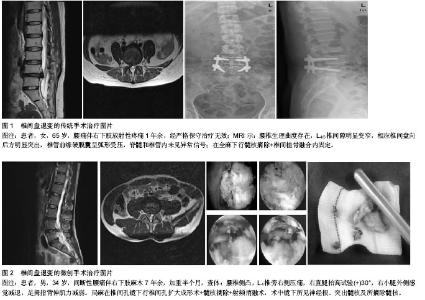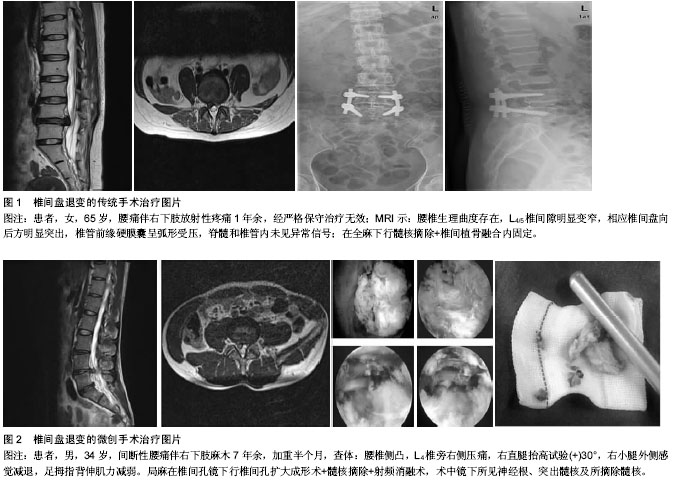Chinese Journal of Tissue Engineering Research ›› 2015, Vol. 19 ›› Issue (37): 6024-6030.doi: 10.3969/j.issn.2095-4344.2015.37.022
Previous Articles Next Articles
Lumbar disc degeneration: tissue engineering repair and biomechanical evaluation
Dong Shi-shi, Li Jing-feng, Zhou Yi-chi, Zha Yuan-yu, Jin Wei
- Department of Orthopedics, Zhongnan Hospital of Wuhan University, Wuhan 430071, Hubei Province, China
-
Online:2015-09-10Published:2015-09-10 -
Contact:Jin Wei, M.D., Associate professor, Department of Orthopedics, Zhongnan Hospital of Wuhan University, Wuhan 430071, Hubei Province, China -
About author:Dong Shi-shi, Master, Department of Orthopedics, Zhongnan Hospital of Wuhan University, Wuhan 430071, Hubei Province, China
CLC Number:
Cite this article
Dong Shi-shi, Li Jing-feng, Zhou Yi-chi, Zha Yuan-yu, Jin Wei . Lumbar disc degeneration: tissue engineering repair and biomechanical evaluation[J]. Chinese Journal of Tissue Engineering Research, 2015, 19(37): 6024-6030.
share this article
| [1] Muftuler LT, Jarman JP, Yu HJ, et al. Association between intervertebral disc degeneration and endplate perfusion studied by DCE-MRI. Eur Spine J. 2014. [Epub ahead of print]. [2] Tam WK, Cheung KM, Leung VY. Intervertebral disc engineering through exploiting mesenchymal stem cells: progress and perspective. Curr Stem Cell Res Ther. 2014. [Epub ahead of print]. [3] Guillaume O,Naqvi SM,Lennon K, et al. Enhancing cell migration in shape-memory alginate-collagen composite scaffolds: In vitro and ex vivo assessment for intervertebral disc repair. J Biomater Appl. 2014. [Epub ahead of print]. [4] Yu PF, Jiang H, Liu JT, et al. Traditional Chinese medicine treatment for ruptured lumbar disc herniation: clinical observations in 102 cases. Orthop Surg. 2014;6(3):229-235. [5] Yeung AT,Tsou PM.Posterolateral endoscopic excision for lumbar disc herniation: surgical technique,outcome,and complications in 307 consecutive cases. Spine. 2002;27(7): 722-731. [6] Hoogland T,Schubert M,Miklitz B.et al.Transforaminal posterolateral endoscopic discectomy with or without the combination of a low-dose chymopapain:a prospective randomized study in 280 consecutive cases. Spine. 2006; 31(24):E890-897. [7] Zhou Y, Li CQ,Wang J, et al.Technique skill and clinical choices of the YESS and TESSYS in percutaneous transforaminal endoscopic discectomy for lumbar disc herniations. China J Orthop. 2010;30(3):225-231. [8] Hoogland T,van den Brekel-Dijkstra K, Schubert M, et al. Endoscopic transforaminal discectomy for recurrent lumbar disc herniation: a prospective, cohort evaluation of 262 consecutive cases. Spine. 2008;33(9):973-978. [9] Shin KH,Chang HG,Rhee NK,et al.Revisional percutaneous full endoscopic disc surgery for recurrent herniation of previous open lumbar discectomy. Asian Spine J. 2011;5(1): 1-9. [10] Dreischarf M,Zander T,Shirazi-Adl A,et al.Comparison of eight published static finite element models of the intact lumbar spine: predictive power of models improves when combined together. J Biomech. 2014;47(8):1757-1766. [11] Vergroesen PP,van der Veen AJ,van Royen BJ,et al. Intradiscal pressure depends on recent loading and correlates with disc height and compressive stiffness. Eur Spine J. 2014; 23(11):2359-2368. [12] Wismer N,Grad S,Fortunato G,et al.Biodegradable electrospun scaffolds for annulus fibrosus tissue engineering: effect of scaffold structure and composition on annulus fibrosus cells in vitro.Tissue Eng Part A. 2014;20(3-4): 672-682. [13] Chang G, Kim HJ, Vunjak-Novakovic G,et al.Enhancing annulus fibrosus tissue formation in porous silk scaffolds. J Biomed Mater Res A. 2010;92(1):43-51. [14] Bhattacharjee M,Miot S,Gorecka A,et al.Oriented lamellar silk fibrous scaffolds to drive cartilage matrix orientation:towards annulus fibrosus tissue engineering. Acta Biomater. 2012;8(9): 3313-3325. [15] See EY,Toh SL,Goh JC.Effects of radial compression on a novel simulated intervertebral disc-like assembly using bone marrow-derived mesenchymal stem cell cell-sheets for annulus fibrosus regeneration. Spine. 2011;36(21): 1744-1751. [16] Sato M,Asazuma T,Ishihara M,et al.An experimental study of the regeneration of the intervertebral disc with an allograft of cultured annulus fibrosus cells using a tissue-engineering method. Spine. 2003;28(6):548-553. [17] Shao X, Hunter CJ. Developing an alginate/chitosan hybrid fiber scaffold for annulus fibrosus cells. J Biomed Mater Res A. 2007;82(3):701-710. [18] Pan Y,Chu T,Dong S,et al. Cells scaffold complex for intervertebral disc anulus fibrosus tissue engineering: in vitro culture and product analysis. Mol Biol Rep. 2012;39(9): 8581-8594. [19] Kim SH,Song JE,Lee D,et al.Development of poly(lactide- co-glycolide) scaffold- impregnated small intestinal submucosa with pores that stimulate extracellular matrix production in disc regeneration. J Tissue Eng Regen Med. 2014;8(4):279-290. [20] Sivan SS,Roberts S,Urban JP,et al.Injectable hydrogels with high fixed charge density and swelling pressure for nucleus pulposus repair: biomimetic glycosaminoglycan analogues. Acta Biomater. 2014;10(3):1124-1133. [21] Foss BL,Maxwell TW,Deng Y.Chondroprotective supplementation promotes the mechanical properties of injectable scaffold for human nucleus pulposus tissue engineering. J Mech Behav Biomed Mater. 2014;29:56-67. [22] Kumar D,Gerges I,Tamplenizza M,et al.Three-dimensional hypoxic culture of human mesenchymal stem cells encapsulated in a photocurable, biodegradable polymer hydrogel: a potential injectable cellular product for nucleus pulposus regeneration. Acta Biomater. 2014;10(8):3463- 3474. [23] Smith LJ,Gorth DJ,Showalter BL,et al. In vitro characterization of a stem-cell-seeded triple-interpenetrating- network hydrogel for functional regeneration of the nucleus pulposus.Tissue Eng Part A. 2014;20(13-14):1841-1849. [24] Leung VY,Aladin DM,Lv F,et al. Mesenchymal stem cells reduce intervertebral disc fibrosis and facilitate repair. Stem Cells. 2014;32(8):2164-2177. [25] Mwale F,Wang HT,Roughley P,et al. Link N and mesenchymal stem cells can induce regeneration of the early degenerate intervertebral disc. Tissue Eng Part A. 2014;20(21-22): 2942-2949. [26] Herranz H,Weng R,Cohen SM. Crosstalk between epithelial and mesenchymal tissues in tumorigenesis and imaginal disc development. Curr Biol. 2014;24(13):1476-1484. [27] Friedenstein AJ,Piatetzky-Shapiro II,Petrakova KV.Osteogenesis in transplants of bone marrow cells. J Embryol Exp Morphol. 1966;16(3):381-390. [28] Zhang Z,Li F,Tian H,et al. Differentiation of adipose-derived stem cells toward nucleus pulposus-like cells induced by hypoxia and a three-dimensional chitosan-alginate gel scaffold in vitro. Chin Med J (Engl). 2014;127(2):314-321. [29] Dai J,Wang H,Liu G,et al. Dynamic compression and co-culture with nucleus pulposus cells promotes proliferation and differentiation of adipose-derived mesenchymal stem cells. J Biomech. 2014;47(5):966-972. [30] Clarke LE,McConnell JC,Sherratt MJ. Growth differentiation factor 6 and transforming growth factor-beta differentially mediate mesenchymal stem cell differentiation, composition, and micromechanical properties of nucleus pulposus constructs. Arthritis Res Ther. 2014;16(2):R67. [31] Presciutti SM,Paglia DN,Karukonda T,et al. PDGF-BB inhibits intervertebral disc cell apoptosis in vitro. J Orthop Res. 2014; 32(9): 1181-1188. [32] Wang Z,Hutton WC,Yoon ST. Bone morphogenetic protein-7 antagonizes tumor necrosis factor-α-induced activation of nuclear factor κB and up-regulation of the ADAMTS, leading to decreased degradation of disc matrix macromolecules aggrecan and collagen II. Spine J. 2014 ;14(3):505-512. [33] Lee KI, Moon SH, Kim H,et al.Tissue engineering of the intervertebral disc with cultured nucleus pulposus cells using atelocollagen scaffold and growth factors.Spine. 2012;37(6): 452-458. [34] Gruber HE,Hoelscher GL,Ingram JA,et al. Growth and differentiation factor-5 (GDF-5) in the human intervertebral annulus cells and its modulation by IL-1ß and TNF-α in vitro. Exp Mol Pathol. 2014 ;96(2):225-229. [35] Wang H,Zhou Y,Huang B,et al. Utilization of stem cells in alginate for nucleus pulposus tissue engineering. Tissue Eng Part A. 2014;20(5-6): 908-920. [36] Roughley P,Hoemann C,DesRosiers E,et al.The potential of chitosan-based gels containing intervertebral disc cells for nucleus pulposus supplementation. Biomaterials. 2006;27(3): 388-396. [37] Benoit DS,Collins SD,Anseth KS.Multifunctional hydrogels that promote osteogenic hMSC differentiation through stimulation and sequestering of BMP2.Adv Funct Mater. 2007;17(13):2085-2093. [38] Edlund U,Danmark S,Albertsson AC.A strategy for the covalent functionalization of resorbable polymers with heparin and osteoinductive growth factor. Biomacro Molecul. 2008; 9(3):901-905. [39] Liu S,Chen X,Zhang Q,et al.Multifunctional hydrogels based on β-cyclodextrin with both biomineralization and anti-inflammatory properties. Carbohydr Polym. 2014;102: 869-876. [40] Fujita M,Ishihara M,Simizu M,et al.Vascularization in vivo caused by the controlled release of fibroblast growth factor-2 from an injectable chitosan/nonanticoagulant heparin hydrogel. Biomaterials. 2004;25(4):699-706. |
| [1] | Xu Feng, Kang Hui, Wei Tanjun, Xi Jintao. Biomechanical analysis of different fixation methods of pedicle screws for thoracolumbar fracture [J]. Chinese Journal of Tissue Engineering Research, 2021, 25(9): 1313-1317. |
| [2] | Zhang Tongtong, Wang Zhonghua, Wen Jie, Song Yuxin, Liu Lin. Application of three-dimensional printing model in surgical resection and reconstruction of cervical tumor [J]. Chinese Journal of Tissue Engineering Research, 2021, 25(9): 1335-1339. |
| [3] | Chen Xinmin, Li Wenbiao, Xiong Kaikai, Xiong Xiaoyan, Zheng Liqin, Li Musheng, Zheng Yongze, Lin Ziling. Type A3.3 femoral intertrochanteric fracture with augmented proximal femoral nail anti-rotation in the elderly: finite element analysis of the optimal amount of bone cement [J]. Chinese Journal of Tissue Engineering Research, 2021, 25(9): 1404-1409. |
| [4] | Zhou Jihui, Li Xinzhi, Zhou You, Huang Wei, Chen Wenyao. Multiple problems in the selection of implants for patellar fracture [J]. Chinese Journal of Tissue Engineering Research, 2021, 25(9): 1440-1445. |
| [5] | Zeng Yanhua, Hao Yanlei. In vitro culture and purification of Schwann cells: a systematic review [J]. Chinese Journal of Tissue Engineering Research, 2021, 25(7): 1135-1141. |
| [6] | Xu Yulin, Shen Shi, Zhuo Naiqiang, Yang Huilin, Yang Chao, Li Yang, Zhao Heng, Zhao Lu. Biomechanical comparison of three different plate fixation methods for acetabular posterior column fractures in standing and sitting positions [J]. Chinese Journal of Tissue Engineering Research, 2021, 25(6): 826-830. |
| [7] | Cai Qunbin, Zou Xia, Hu Jiantao, Chen Xinmin, Zheng Liqin, Huang Peizhen, Lin Ziling, Jiang Ziwei. Relationship between tip-apex distance and stability of intertrochanteric femoral fractures with proximal femoral anti-rotation nail: a finite element analysis [J]. Chinese Journal of Tissue Engineering Research, 2021, 25(6): 831-836. |
| [8] | Song Chengjie, Chang Hengrui, Shi Mingxin, Meng Xianzhong. Research progress in biomechanical stability of lateral lumbar interbody fusion [J]. Chinese Journal of Tissue Engineering Research, 2021, 25(6): 923-928. |
| [9] | Xie Chongxin, Zhang Lei. Comparison of knee degeneration after anterior cruciate ligament reconstruction with or without remnant preservation [J]. Chinese Journal of Tissue Engineering Research, 2021, 25(5): 735-740. |
| [10] | Xu Dongzi, Zhang Ting, Ouyang Zhaolian. The global competitive situation of cardiac tissue engineering based on patent analysis [J]. Chinese Journal of Tissue Engineering Research, 2021, 25(5): 807-812. |
| [11] | Wu Zijian, Hu Zhaoduan, Xie Youqiong, Wang Feng, Li Jia, Li Bocun, Cai Guowei, Peng Rui. Three-dimensional printing technology and bone tissue engineering research: literature metrology and visual analysis of research hotspots [J]. Chinese Journal of Tissue Engineering Research, 2021, 25(4): 564-569. |
| [12] | Chang Wenliao, Zhao Jie, Sun Xiaoliang, Wang Kun, Wu Guofeng, Zhou Jian, Li Shuxiang, Sun Han. Material selection, theoretical design and biomimetic function of artificial periosteum [J]. Chinese Journal of Tissue Engineering Research, 2021, 25(4): 600-606. |
| [13] | Liu Fei, Cui Yutao, Liu He. Advantages and problems of local antibiotic delivery system in the treatment of osteomyelitis [J]. Chinese Journal of Tissue Engineering Research, 2021, 25(4): 614-620. |
| [14] | Li Xiaozhuang, Duan Hao, Wang Weizhou, Tang Zhihong, Wang Yanghao, He Fei. Application of bone tissue engineering materials in the treatment of bone defect diseases in vivo [J]. Chinese Journal of Tissue Engineering Research, 2021, 25(4): 626-631. |
| [15] | Zhang Zhenkun, Li Zhe, Li Ya, Wang Yingying, Wang Yaping, Zhou Xinkui, Ma Shanshan, Guan Fangxia. Application of alginate based hydrogels/dressings in wound healing: sustained, dynamic and sequential release [J]. Chinese Journal of Tissue Engineering Research, 2021, 25(4): 638-643. |
| Viewed | ||||||
|
Full text |
|
|||||
|
Abstract |
|
|||||

